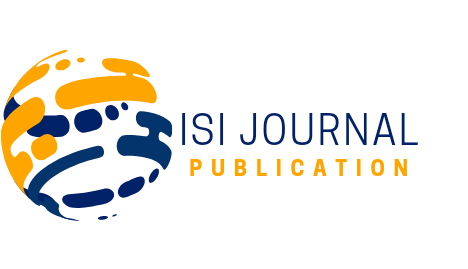How to Avoid Plagiarism Issues in Research Paper Publications
Maintaining originality is one of the most essential responsibilities of any researcher, especially when preparing manuscripts for academic journals. Yet, many scholars—both new and experienced—often struggle with accidental duplication of ideas, improper citations, or the unintentional misuse of sources. Understanding how plagiarism occurs and learning effective strategies to prevent it is crucial for plagiarism-free publishing. In this comprehensive guide, we explore practical ways to avoid plagiarism in research papers, uphold academic integrity, and ensure your work is original, credible, and ethically sound.
One of the first steps in avoiding plagiarism is developing a thorough understanding of what it actually means. Plagiarism is not limited to copying entire paragraphs from a source; it also includes rephrasing someone else’s ideas without proper attribution, using data or visuals without permission, failing to cite common but non-universal knowledge, and even reusing your own previously published work without acknowledgment. Many cases of plagiarism arise from misunderstanding these nuances rather than intentional misconduct. However, regardless of intent, plagiarism can lead to manuscript rejection, academic penalties, and damage to your reputation. Therefore, it is important to familiarize yourself with your field’s citation standards and commit to upholding academic integrity in every stage of writing.
A key practice to avoid plagiarism is to cultivate disciplined note-taking habits during the research phase. When reading articles, books, or reports, record all source details carefully, including the title, author, publication year, journal name, and page numbers. Clearly distinguish between direct quotes, paraphrased content, and your own insights as you take notes. This prevents confusion later when drafting your paper and reduces the risk of accidentally blending someone else’s ideas with your own. Organized notes serve as a reliable reference when writing literature reviews and theoretical discussions, and they help ensure that all borrowed information is properly credited.
Proper citation is another essential tool for maintaining plagiarism-free publishing. Every academic field uses specific citation styles—APA, MLA, Chicago, IEEE, or others—depending on disciplinary norms. To avoid mistakes, familiarize yourself with the guidelines of the target journal and apply the style consistently throughout your paper. Whenever you quote or paraphrase a source, mention the author’s name, year of publication, and relevant page numbers if required. Remember that paraphrasing does not simply mean altering a few words; it involves understanding the original idea fully and expressing it in your own analytical voice. Even then, the source must still be cited. Using a citation manager like Zotero, Mendeley, or EndNote can further help you organize references efficiently and adhere to required formatting rules.
In addition to citations, developing strong paraphrasing skills is crucial to avoiding plagiarism in research papers. Good paraphrasing requires more than substituting words with synonyms. It involves reading the source material, internalizing its meaning, analyzing it, and then rewriting the concept using your own structure, tone, and reasoning. This transformation ensures that the content is genuinely new, even if inspired by existing research. Supporting your interpretation with critical thoughts also adds originality and strengthens your arguments. If you struggle with paraphrasing, try practicing with short passages first and comparing your version with the original to ensure you have not mirrored sentence structures too closely.
Another effective strategy is to integrate your own perspectives more deeply into your writing. Your unique interpretation, analysis, and evaluation of existing literature are what make your paper valuable. Instead of relying heavily on long quotations or extensive paraphrasing, prioritize your own arguments and insights. Use sources to support, contrast, or contextualize your ideas, not to replace them. This approach not only reinforces academic integrity but also increases the originality and impact of your research.
Technology also plays a crucial role in maintaining plagiarism-free publishing. Numerous plagiarism detection tools—such as Turnitin, Grammarly Premium, and iThenticate—allow you to check your manuscript before submission. These tools compare your content against vast databases of published literature, student papers, and online content. Running your paper through such tools helps identify accidentally copied text, overly similar paraphrases, or missing citations. After reviewing the similarity report, you can edit your paper accordingly to ensure it meets the originality standards required by journals and academic institutions.
Ethical self-awareness is another component in avoiding plagiarism. Researchers should develop a mindset of responsibility and respect toward intellectual property. This includes acknowledging collaborative contributions, differentiating between personal ideas and those derived from others, and maintaining transparency in methodology and source usage. Upholding academic integrity also means avoiding shortcuts such as using unverified AI-generated content without proper review. While AI tools can be helpful for drafting or organizing thoughts, researchers must verify the accuracy, originality, and quality of all AI-assisted portions to prevent unintended plagiarism.
Time management also affects originality. Many plagiarism incidents occur when researchers rush to finish papers at the last minute. Working under pressure can lead to sloppy paraphrasing, incomplete citations, or overreliance on copied material. To avoid plagiarism, begin writing early, break your tasks into manageable portions, and allocate time for multiple revisions. A well-planned research and writing schedule reduces stress and allows you to focus more carefully on crafting original content.
Finally, when in doubt, cite your source. It is always better to over-cite than to risk plagiarism accusations. Citing sources does not weaken your paper; it strengthens it by demonstrating that your arguments are built upon credible, scholarly foundations. Proper citations show that you are part of an ongoing academic conversation and that you respect the contributions of other researchers. This adherence to academic integrity enhances your credibility and fosters trust with your audience.
In conclusion, preventing plagiarism in research papers requires a combination of awareness, discipline, ethical responsibility, and the effective use of research tools. By taking careful notes, improving your paraphrasing skills, citing accurately, managing your time well, and checking your work with plagiarism detection software, you can produce high-quality manuscripts suitable for plagiarism-free publishing. Upholding originality is not only a professional obligation but also a reflection of your commitment to intellectual honesty and the advancement of knowledge.
